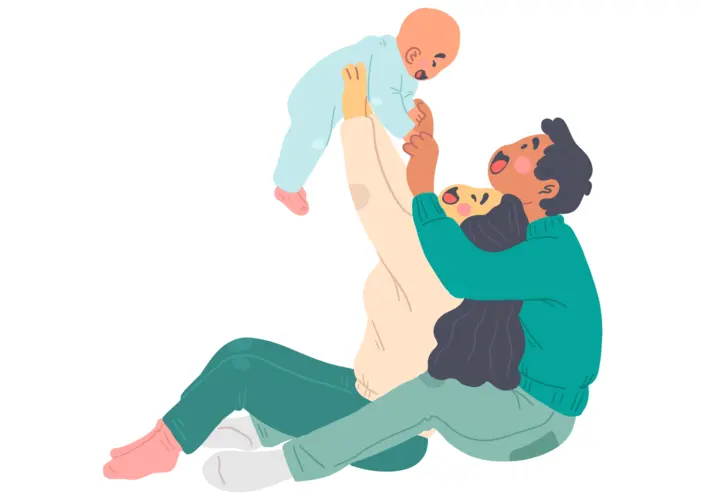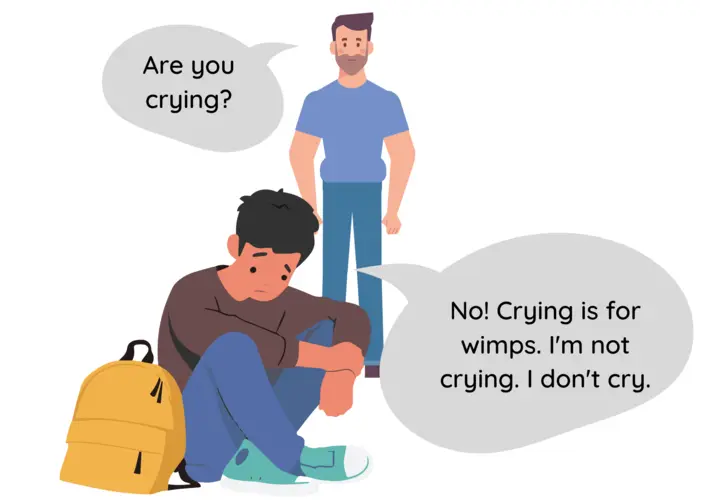One of the most common questions that has been asked in our healing community is, “How are narcissists made?”
Narcissistic personality disorder (NPD) is a complex mental health condition that many mental health professionals believe originates from an abusive or unhealthy upbringing with primary caregivers who are emotionally unavailable, unresponsive, and inconsistent.
In this article, I will guide you through the extraordinary research of Heinz Kohut, Otto Kernberg, Alexander Lowen, John Bowlby, Mary Ainsworth, and Cindy Hazan to help you better understand the origin of narcissism.
At the end of this article, there’s a great clip from an interview we had with one of the most knowledgeable therapist we’ve had the pleasure of working with, Dr. Jolie Avena, about the origin or narcissism. You aren’t going to want to miss it!
Primary Caregivers Who Don’t Mirror Their Children
Heinz Kohut (1913 – 1981) was an Austrian-born American psychoanalyst best known for developing Self Psychology.
He believed narcissism originates from primary caregivers who don’t mirror their children.
In this context, mirroring describes how primary caregivers reflect or “mirror” their child’s thoughts, feelings, emotions, or needs.
The research around mirroring, also commonly referred to as parental mirroring, suggests that children whose primary caregivers mirror are much more likely to develop a realistic sense of self and have healthy cognitive development.

While children who their primary caregivers do not mirror will have a much harder time developing a realistic sense of self, and they will have an unhealthy cognitive development, leaving them incapable of managing their own emotions.
As a result, they’ll search their external environment for the validation, admiration, and reassurance they can’t get from their primary caregivers, often leading them to develop narcissistic traits as a coping mechanism.
Primary Caregivers Who Are Narcissistic and Unempathetic with Their Children
Otto Kernberg (1928 – Present) is a psychoanalyst and psychiatrist known for his significant contributions to understanding personality disorders, particularly borderline personality disorder and narcissistic personality disorder.
He believes narcissism originates from primary caregivers who are narcissistic and unempathetic with their children.
He believes that an upbringing with caregivers who are narcissistic and unempathetic leaves the child emotionally starved and that this emotional starvation causes children to focus on developing their external world instead of their internal world.
This is because the children of narcissistic caregivers quickly learn that they can only receive any type of attention by being a source of narcissistic supply.
Suggested Reading: What Is Narcissistic Supply and Why Do They Need It So Badly?
Sadly, developing this belief causes children to search their external environment for the validation, admiration, and reassurance they can’t get from their primary caregivers, often leading them to develop narcissistic traits as a coping mechanism.
Primary Caregivers Who Shame and Humiliate Their Children for Expressing Their Emotions
Alexander Lowen (1910 – 2008) was an American physician and psychotherapist who created bioenergetic analysis, a form of mind-body psychotherapy.
She believed that narcissism originates from an abusive or unhealthy upbringing plagued with shame and humiliation that revolves around the child’s emotions.
Primary caregivers who make their children feel weak or inadequate for expressing their emotions teach the child that their emotions are wrong.
A sad but accurate example of this would be a child getting spanked for crying.
This type of response to a child’s emotions corrupts their perception of a healthy relationship and causes them to develop a belief that having emotions is wrong.

This causes the child to develop many painful thoughts, feelings, and emotions, such as feelings of being unlovable, unwanted, inadequate, worthless, and weak.
Suggested Reading: How Do Narcissists See Themselves?
Under these circumstances, the child may develop narcissistic traits as a coping mechanism, which explains why narcissists need narcissistic supply (i.e., validation, admiration, reassurance, power, and control) to feel emotionally stable.
Primary Caregivers Who Are Emotionally Unavailable, Unresponsive, and Inconsistent
John Bowlby and Mary Ainsworth were influential figures in developmental psychology, known particularly for their work on attachment theory.
Although they did not directly link their work to the formation of narcissistic traits, later researchers have done so.
In comparison to the previous three sections, this section is going to be long.
- 1st: I will explain who John Bowlby and Mary Ainsworth are.
- 2nd: I will explain their work (Attachment Theory).
- 3rd: I will explain the connection between the Attachment Theory and NPD.
John Bowlby (1907 – 1990) was a British psychiatrist and psychoanalyst who first developed attachment theory.
Mary Ainsworth (1913 – 1999) was a developmental psychologist who worked with Bowlby and significantly contributed to developing attachment theory.
She is particularly known for her “Strange Situation” procedure used to observe early emotional attachment between a child and its primary caregiver.
In this research, Ainsworth identified three main attachment styles in infants:
- Secure attachment
- Avoidant attachment (also known as insecure-avoidant)
- Anxious-ambivalent attachment (also known as insecure-resistant)
Researchers who expanded on Ainsworth’s initial framework later identified a fourth attachment style, known as disorganized attachment.
Alright, now let’s unpack what the Attachment Theory is.
Attachment Theory focuses on the bond between infants and their primary caregivers and their impact on emotional and social development.
The term “attachment style” is used to describe the way infants respond both emotionally and physically to their caregivers, particularly during times of stress or separation.
An infant with a secure attachment style may be upset when separated from their primary caregiver but quickly soothed upon return.

An infant with an avoidant attachment attachment style does not show significant distress when separated from their caregiver.
Upon the caregiver’s return, the infant may actively avoid or ignore the caregiver.
An infant with an anxious-ambivalent attachment style can become extremely distressed when separated from their primary caregiver.
Upon the caregiver’s return, the infant may be caught between a desire for comfort and a drive to express anger or frustration at the caregiver for leaving.
How is this connected to NPD?
Children with attentive, responsive, and consistent caregivers are more likely to develop a secure attachment style.
Children with inconsistent, unresponsive, or neglectful caregivers are more likely to develop insecure attachment styles (either avoidant or anxious-ambivalent).
These children often struggle with insecurity and inadequacy due to the lack of consistent, nurturing care.
As a result, they often turn to their external environment to seek the validation, admiration, and reassurance they are not receiving from their primary caregivers.
They might also develop an inflated sense of self or overemphasize their own achievements as a defense mechanism to counter feelings of worthlessness or unlovability.
This external validation is known as “narcissistic supply,” and it serves to bolster their self-esteem and emotional stability. Over time, these behavioral patterns can solidify and lead to the development of narcissistic traits as the child grows into adulthood.
What Should You Take Away from This Article?
To end this article, I want to invite you to watch our interview with Dr. Jolie Avena. This interview was focuses around understanding the origin of narcissism.
She is one of most knowledgeable therapists that we’ve had the pleasure of working with, so I think you are really going to enjoy our interview with her.
